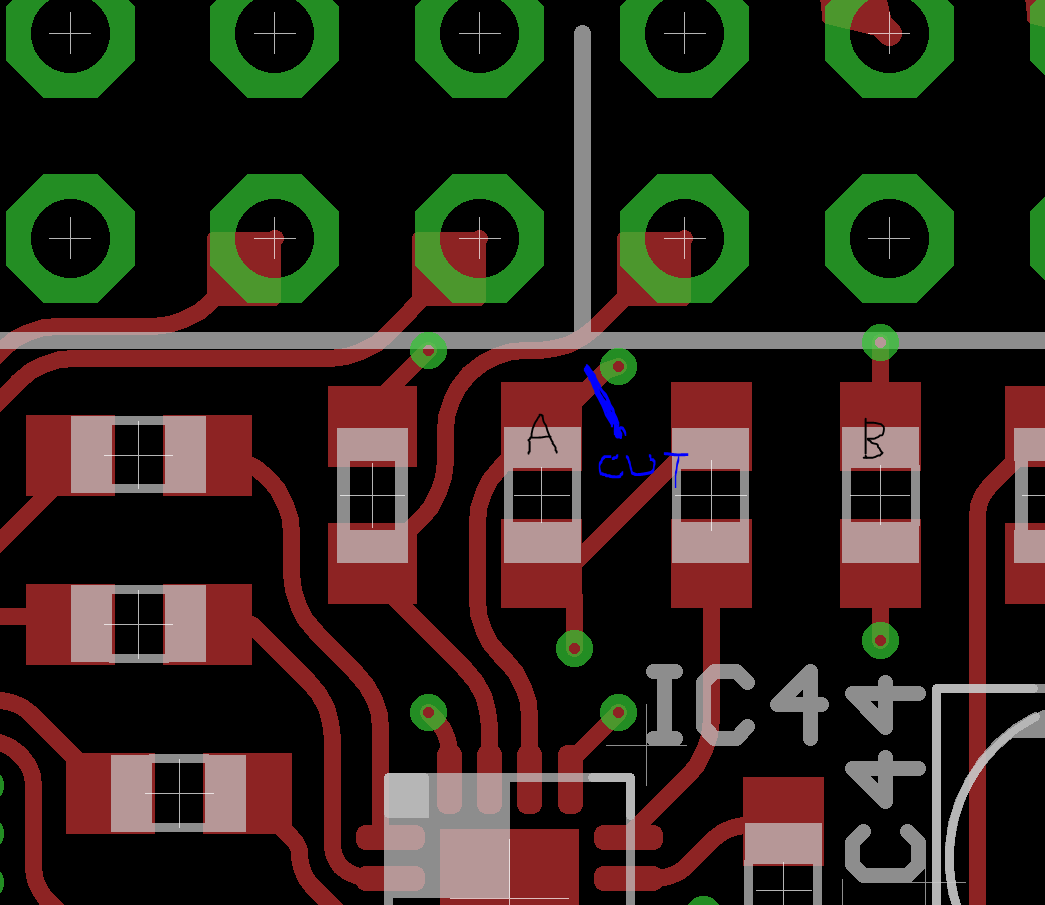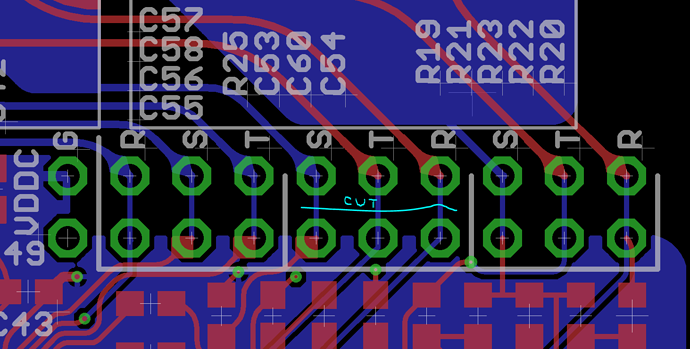you have remembered to split the L/R output channels?
can you try to just send the output to LEFT (rather than both the left and right) and see if you are still getting no/distorted output. then try the RIGHT on its own. (i.e. audio/out left)
( I quite often forget this, when I'm unplugging and plugging in boards  )
)
Ive just dug thru the code... so this needs verifying with @johannes .
Axoloti has two output buffers for left and right, these are 'delivered' to the ADAU1961 codec.
as far as i can tell, its then the ADAU1961 internal mixer that then outputs to the TRS outputs and the headphone.
i.e. I don't think its possible to send different data for the headphone vs the main outputs, its more a mixing function of the codec
hey while I'm here though, a small question for @johannes , am i correct that on the data sheet for the ADAU1961, you can also take (analog) input directly thru to the output via the mixer , p33 has L/R and aux inputs on the mixer.
also is mono output connected somewhere (MONOOUT)
EDIT: btw, just be careful, if you are planning to drive something from the headphone output, Johannes has been very clear the headphone output should only be used for headphones, and can cause damage if you try to drive speakers etc.
again. again Im sure he can supply more info.

 i use headphone out with
i use headphone out with 



